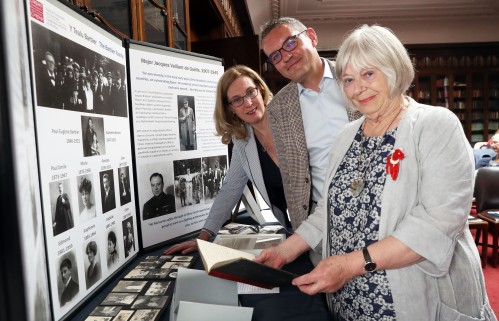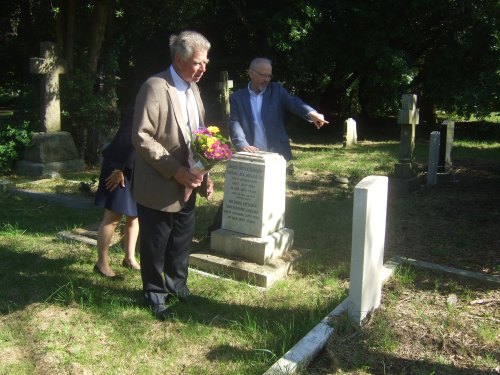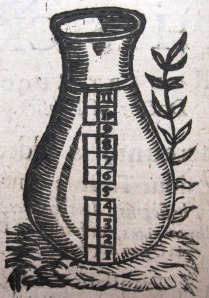This guest post is courtesy of Katy Stone, an undergaduate with the School of Modern Languages who is currently working through the fascinating Barbier family archive as part of a CUROP project to catalogue this unique resource.
Following a year of study abroad at l’Université Savoie Mont Blanc, France, I was delighted to be given the opportunity to participate in an 8-week placement with the Cardiff University Research Opportunities Programme (CUROP). My responsibility during the eight weeks is to pursue the efforts made by Pip Bartlett, last year’s CUROP student, in scoping the Barbier archive under the supervision of Professor Hanna Diamond, a 20th century French historian, and Alan Hughes, Head of Special Collections and Archives at Cardiff University. So far this has involved organising, archiving and describing materials from the archive, using my language skills to translate and interpret the sources. I have been cataloguing the information into a spreadsheet for future researchers. Thus far, I have completed boxes 1898, 1903 and 1904, which have revealed fascinating details about this period.
Soon after commencing my placement, I participated in the official launch of the archive and unveiling of a special commemorative plaque in honour of Jacques Vaillant de Guélis, a Barbier family member, on Wednesday 6th June, the 74th anniversary of the D-Day landings. I thought it would be fitting to offer an account of the event for my first blog post.

The afternoon of celebration took place at the Temple of Peace in Cathays Park. The Special Collections team had put together a small exhibition about the history of the Barbier family, Jacques Vaillant de Guélis and the archive. The display showcased some treasures of the rich and extensive archive, including a framed letter from Prime Minister David Lloyd George discussing Belgian refugees in Cardiff.
Guests included members of the Franco-Welsh Barbier family, some of whom had come specially from France to attend the events. It was clear to me that for many of them, some of whom had not met for many years, the event was an opportunity for a family reunion. Owing to the family’s bicultural identity, in some cases, I witnessed first-time meetings between those based in France and relatives who hailed from Paris and elsewhere in France, with others coming from UK destinations such as Devon and Marlborough, Wiltshire.
I found the introductory presentations by Hanna Diamond and Alan Hughes extremely illuminating. They highlighted the extraordinary range of materials in the archive including an abundance of diaries, letters, newspaper cuttings and photographs. I was particularly struck by the significant extent to which the 19th century Frenchman influenced Cardiff’s society through his involvement with local cultural societies like ‘La Société Franco-Britannique de Cardiff’, and his personal commitment to preserving the Welsh language. As a consequence, it is clear that the archive boasts an important array of sources on social history. I would be curious to mobilise the archive to discover more about what life was like for people in Victorian Cardiff during the late 19th century and early 20th century.
Mrs. Delphine Isaaman, granddaughter of Paul Barbier who donated the archive to the University along with her cousin Paul Barbier, also spoke about how her interest in her family’s story grew after finding family documents. This led to her spending around a decade researching in order to fill in the gaps, and resulted in the development of the archive. Delphine had actually stored and catalogued much of the archive before it arrived in Cardiff University Special Collections. In her talk, she shared tales from the archive, such as tips from other family members on bringing up babies, much to the amusement of the audience. This particular story demonstrated Hanna Diamond’s earlier statement that “the archive holds vast research potential for people working on the role of women in World War One”.

To celebrate the life of Paul Barbier’s nephew, Jacques Vaillant de Guélis, the talks were followed by a swift relocation to his birthplace at 3 Museum Place, at the heart of the University campus. During the Second World War, de Guélis played a crucial role as a spy in the secretive Special Operations Executive due to his Franco-British background. A Blue Plaque to honour his remarkable achievements was unveiled by Professor Colin Riordan, President and Vice-Chancellor of Cardiff University, together with Claudine Ripert Landler, the Cultural Counsellor of the French Embassy in the United Kingdom. As a historian and a linguist, it was thrilling to see the war hero’s efforts formally recognised, and the pure elation upon the faces of those who came to witness it. Thanks to the former spy’s bilingualism, he was able to go unnoticed behind enemy lines, fighting with the French Resistance on the ground and contributing to the liberation of Nazi-occupied France. For me the event therefore highlighted the value and importance of learning foreign languages. One monolingual member of the Barbier family who I talked to teased that he was envious of his sibling’s bilingualism. I am optimistic that the plaque will promote Jacque’s story, and I hope that it might inspire others to engage in learning a language.
After the emotions of the plaque unveiling, the afternoon closed with a drinks reception in the foyer of the School of Modern Languages, at 66 Park Place. This was a final chance to exchange with the family and other interested parties. It was a valuable opportunity to get to know the family, and I even managed to practise my French with some relatives from Paris! I very much look forward to conducting oral interviews with Hanna Diamond to capture the life stories of Paul and Mary Barbier in July. Flowers were also laid on Jacques grave in Cathays Cemetery by his cousin and the Friends of Cathays Cemetery, a touching tribute to the brave man and a moving end to such a special day.

Overall, it was a humbling experience, and a pleasure to finally put some faces to names. I look forward to immersing myself in the project, with the ambition to help unlock the incredible story of this French Cardiff family and especially their role in Cardiff during the Victorian era.












